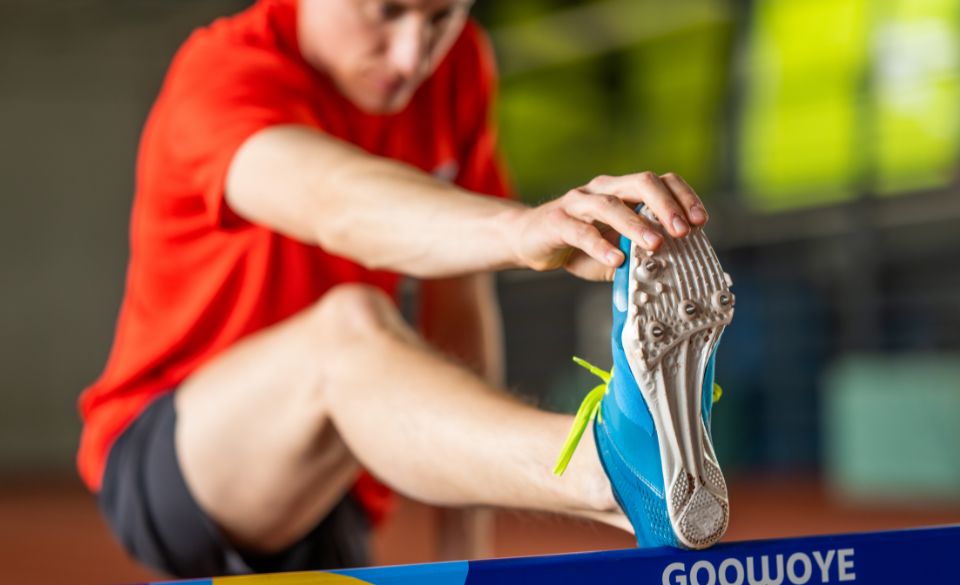
The 8 Best Stretches To Do Before Running
Page Contents
Preparing your body before a run is essential to optimize performance and prevent injuries. One crucial aspect of a pre-run routine is incorporating stretches that target key muscle groups used in running. In this article, we’ll explore the eight best stretches to do before running, providing you with a comprehensive guide to warm up your muscles, improve flexibility, and enhance your overall running experience. So, let’s dive in and discover the stretches that will get you ready to hit the road or trail!
The Benefits of Pre-Run Stretches
Before we delve into the specific stretches, let’s first understand why pre-run stretching is crucial. When done correctly, stretching before a run offers numerous benefits:
1. Increased Flexibility: Pre-run stretches help improve flexibility, allowing your muscles and joints to move more freely during your run. This increased range of motion can enhance running efficiency and reduce the risk of muscle strains.
2. Improved Performance: By incorporating dynamic stretches that mimic the movements of running, you can activate the muscles you’ll be using during your run. This activation helps prepare your body for the demands of running and can improve performance.
3. Injury Prevention: Engaging in pre-run stretches helps warm up the muscles, increasing blood flow and promoting better muscle function. This warm-up can help prevent common running injuries such as pulled muscles, sprains, and strains.
4. Mental Preparation: Stretching before a run allows you to focus on your body and mentally prepare for the upcoming physical activity. It can help you tune in to your breathing, center your mind, and get in the right mindset for a successful run.
Now that we understand the benefits, let’s explore the eight best stretches to include in your pre-run routine.
The Science Behind Pre-Run Stretching
You might be wondering, what does science say about the effectiveness of pre-run stretching? Numerous studies have explored the impact of stretching on running performance and injury prevention. Let’s take a brief look at some key findings:
Dynamic Stretching: Dynamic stretching, which involves moving parts of your body through a full range of motion, has been shown to have positive effects on running performance. A study published in the Journal of Strength and Conditioning Research found that dynamic stretching improved running economy and performance compared to static stretching or no stretching at all.
Muscle Activation: Pre-run stretching can activate the muscles that are essential for running. A study published in the Journal of Sports Science and Medicine demonstrated that dynamic stretching increased muscle activation in the hip and knee extensors, which play a crucial role in running propulsion and stride length.
Injury Prevention: While there is ongoing debate about the direct link between stretching and injury prevention, some studies suggest that regular stretching can reduce the risk of certain running-related injuries. For instance, a systematic review published in the British Journal of Sports Medicine concluded that stretching interventions can help prevent overuse injuries, such as Achilles tendinopathy and plantar fasciitis.
Warm-Up Effect: Engaging in a pre-run stretching routine also serves as an effective warm-up. By increasing blood flow and temperature in the muscles, stretching helps prepare them for the demands of running. This warm-up effect can lead to better muscle elasticity and performance.
It’s important to note that while stretching can have its benefits, it should not replace other components of a comprehensive training program, such as strength training and proper rest.
The Eight Best Stretches to Do Before Running
1. Walking Lunges: Take a step forward with your right leg and lower your body into a lunge position. Push off with your back foot and bring your left leg forward into the next lunge. Repeat for several lunges on each leg. This dynamic stretch activates the muscles in your hips, glutes, and legs.
2. Leg Swings: Stand next to a wall or support and swing one leg forward and backward, gently increasing the range of motion with each swing. Repeat for 10-15 swings on each leg. Leg swings help loosen the hip flexors, hamstrings, and hip adductor muscles.
3. High Knees: Stand tall and lift your right knee as high as you comfortably can while swinging your opposite arm forward. Repeat on the other side, alternating knees and arms for 10-15 repetitions. High knees engage the hip flexors and improve hip and knee mobility.
4. Heel-to-Butt Stretch: While standing, kick your right heel towards your glutes, grabbing your ankle with your right hand. Hold for a moment and release, then repeat on the other side. This stretch targets the quadriceps muscles and prepares them for running.
5. Hip Circles: Stand with your feet hip-width apart and place your hands on your hips. Begin rotating your hips in a circular motion, first clockwise and then counterclockwise. Perform 10-15 circles in each direction. Hip circles help warm up the hip joints and improve hip mobility.
6. Calf Raises: Stand with your feet hip-width apart and raise your heels off the ground, lifting your body onto your toes. Lower your heels back down to the ground. Repeat for 10-15 repetitions. Calf raises activate the calf muscles and improve ankle stability.
7. Standing Forward Bend: Stand with your feet hip-width apart and slowly hinge forward at the hips, reaching towards the ground. Allow your upper body to hang loose, feeling a gentle stretch in your hamstrings and lower back. Hold for 20-30 seconds, breathing deeply.
8. Arm Circles: Extend your arms straight out to the sides and make small circles with your hands. Gradually increase the size of the circles, and then switch direction. Perform 10-15 circles in each direction. Arm circles warm up the shoulders and upper back.
Remember to perform these stretches in a controlled manner, avoiding any jerky or bouncing movements. Start with smaller ranges of motion and gradually increase as your muscles warm up. If you experience any pain or discomfort, modify the stretches to a level that feels comfortable for you.
Final Thoughts
Incorporating a pre-run stretching routine is a vital part of preparing your body for a successful run. By performing these eight dynamic stretches before you hit the pavement, you can increase flexibility, improve performance, prevent injuries, and mentally prepare for your run. Remember, consistency is key, so aim to incorporate these stretches into your pre-run routine regularly.
However, it’s important to note that stretching alone is not a substitute for a proper warm-up. Before you start stretching, it’s recommended to engage in a light aerobic activity such as jogging or brisk walking to raise your heart rate and warm up your muscles.
So, the next time you lace up your running shoes, take a few minutes to go through this pre-run stretching routine. Your body will thank you, and you’ll be setting yourself up for a more enjoyable and injury-free running experience.



